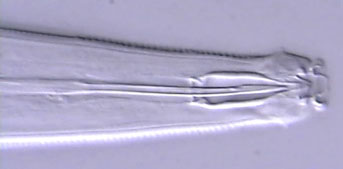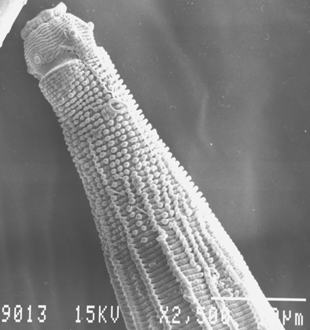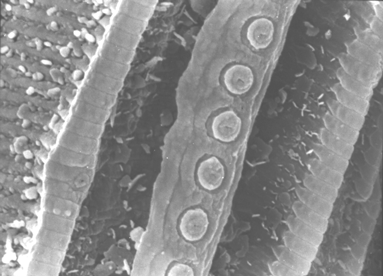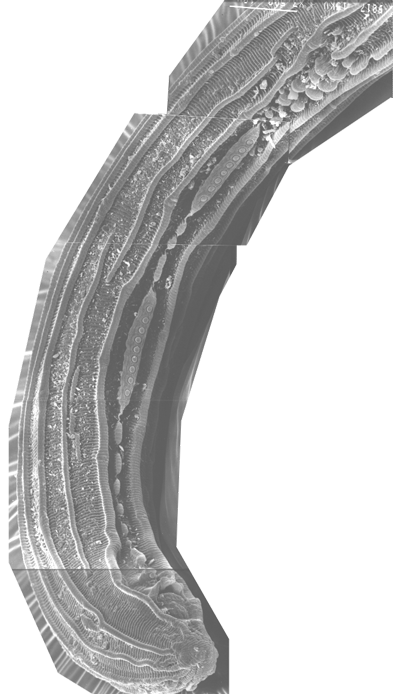

June 2003: Actinca irmae De Ley & Coyne, 1997
This nematode belongs to the family Actinolaimidae, a group of Dorylaimida characterized by complex sclerotized guiding structures around the odontostyle and mouth opening.
Many actinolaims are found in permanently or periodically moist environments, such as mosses or ephemeral pools. This particular species was discovered in rice paddies in Ivory Coast. Some of the many interesting features of A. irmae include the exceptionally long sclerotized tube surrounding the odontostyle and the complex cuticular ornamentation.
As in other species in this group, the male has preanal supplements that are placed closely together as so-called fascicles. This is one among several resemblances between Actinolaimidae and the family Dorylaimidae.
In the case of A. irmae, two fascicles are preceded by an unusual series of cuticular lobes or "pseudosupplements".




